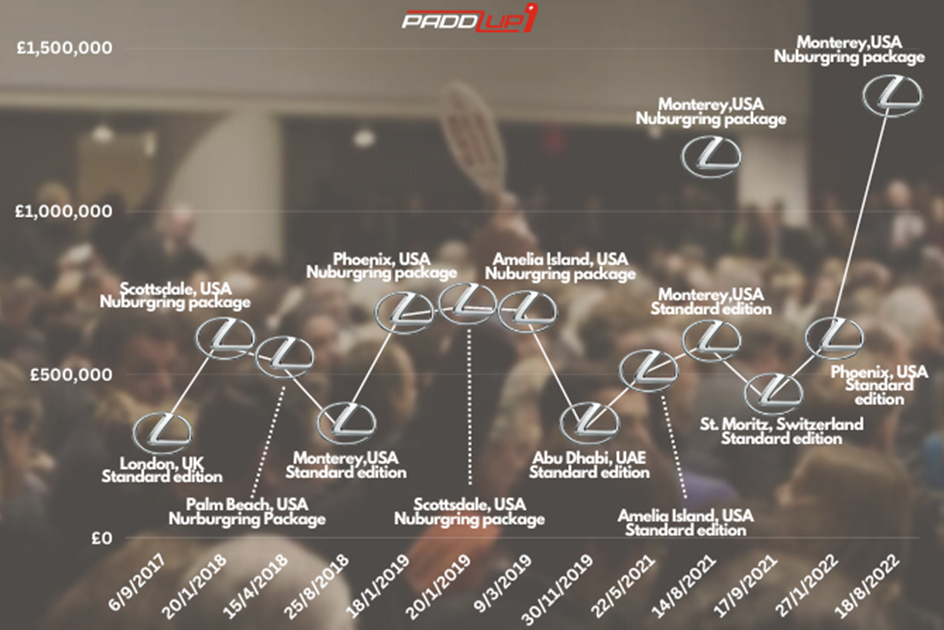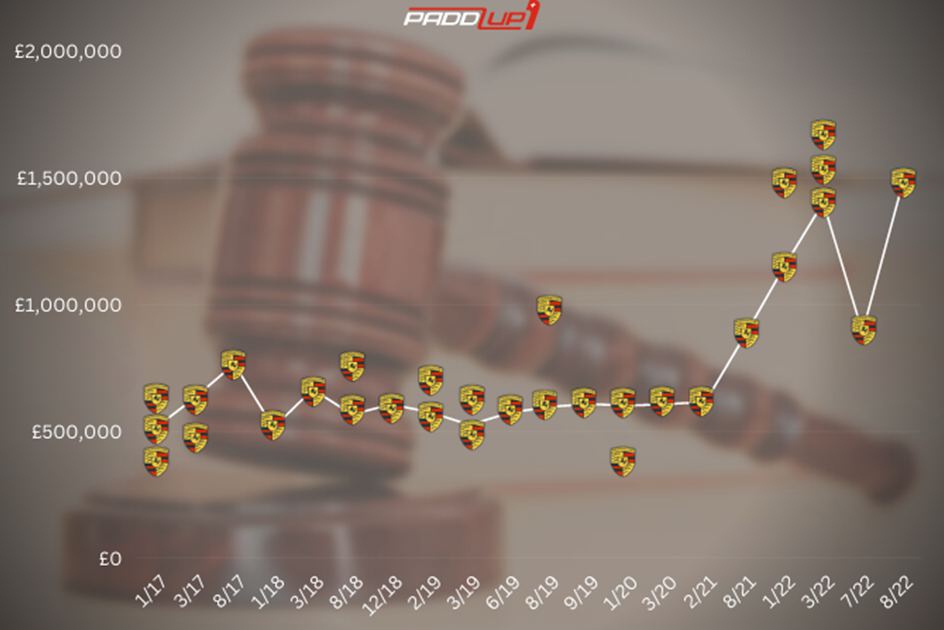Investment head-to-head: Porsche Carrera GT vs Lexus LFA
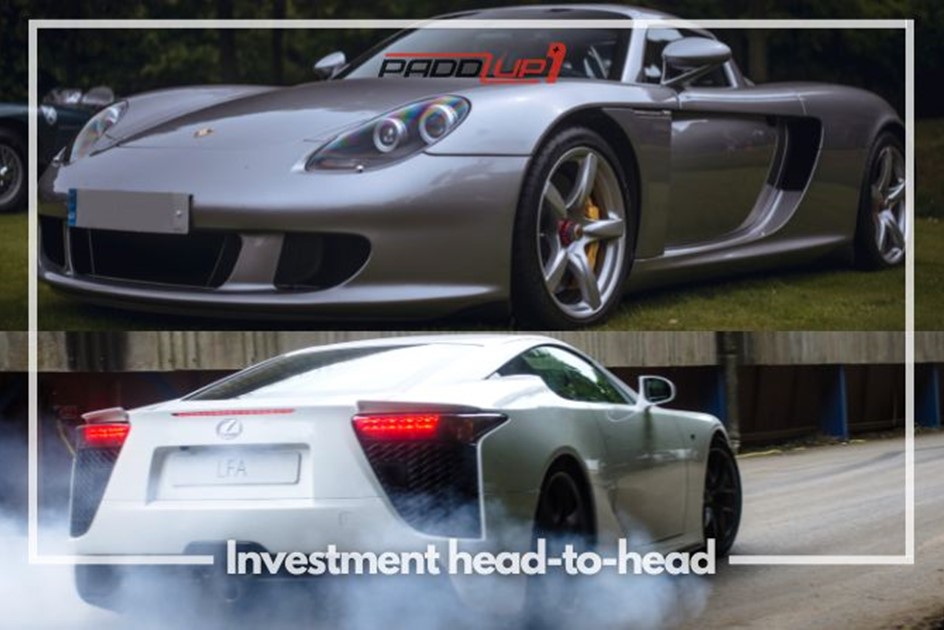
The V10 is widely considered to be one of, if not the best-sounding engine available in a road car. It seems rather fitting then, that we pit two V10 icons – The Lexus LFA and the Porsche Carrera GT – against one another in the latest edition of investment head-to-head.
Both the Carrera GT and the LFA made the V10 their own in an era full of bonkers supercars, and carved out their own niches as brutal, visceral machines. In part, that can be attributed to their deep-rooted links to the race track but there’s a lot more to each of these modern classic supercars than meets the eye.
V10 face off
German engineering at its finest
The Carrera GT, upon its release in 2004 was the most cutting-edge Porsche ever made and one of the most technologically advanced cars of the time full stop. That sentiment is still apparent today as its 20th anniversary looms. It was bold, it was innovative and it stole the hearts of car enthusiasts the world over. Even to this day, the Carrera GT’s reputation precedes its elegant form. Volatile and formidable are some of the first words that spring to mind.
The essence of the Carrera GT can be split into two halves; it is arguably the ultimate expression of a top-tier driver’s car and an analogue on-road experience at its peak before the digital age truly took hold. It became well-known for catching drivers out, a car to be respected and in some cases, feared.

The other side of that coin is one of boundary-pushing engineering. At its heart lies the sonorous V10 engine which can be traced back to The Circuit de la Sarthe at the tail end of the nineties. The 1998 edition of the legendary 24-hour event would be Porsche’s last, allegedly making way for fellow VW-subsidiary Audi and its developmental efforts in endurance racing. The bottom-line saving Cayenne model would subsequently house VW hardware in the wake of the shifts in the global motorsport landscape. Make of that what you will.
Porsche’s departure from World Endurance Championship predecessor, the International Sports Racing Series left the brand’s meticulously engineered, race-bred V10 without a home and so the initial kernel of an idea for the GT took shape. The Paris Motor Show of 2000 would prove a significant milestone in the project’s history when, at the wheel of the Carrera GT concept car, two-time World Rally Championship title holder Walter Röhrl received a pre-dawn police escort through the city streets en route to its official reveal. That’s one way to cause a stir.
Fast forward three years and dream became reality. A revolutionary active rear wing was installed, displacement was revised from 5.5 to 5.7 litres and a six-speed manual transmission sent 604bhp directly to the rear wheels.
Ikigai
The LFA’s story begins – as it does for many of the truly legendary supercars – as a passion project for Toyota CEO Akio Toyoda. A third-generation Toyoda to helm the manufacturer, unlike his engineering-trained forebears, Akio was business-minded and having spent significant time on the production line, felt that a vital love of cars was now absent. He decided a halo supercar would inject that much-needed passion back into the company and together with Toyota Celica GT-Four developer Haruhiko Tanahashi’s unofficial skunkworks team and chief test driver Hiromu Naruse, Akio eventually received board approval for work to begin in 2000.
The original concept first broke cover as the LF-A at the 2005 Tokyo Motor Show. The bones of the LFA we know and love were there, but from that point onwards it began morphing into a very different animal underneath its sleek and disarming bodywork.
Owing to its entirely aluminium chassis, the LF-A had become something of a gannet and the already lengthy development schedule was extended to accommodate the redesign of a new carbon fibre construction. With the revised components in place and some overhauled styling cues, the LF-A was re-revealed in 2007 along with a pledge that production models would make their way to customers at some point in the future.
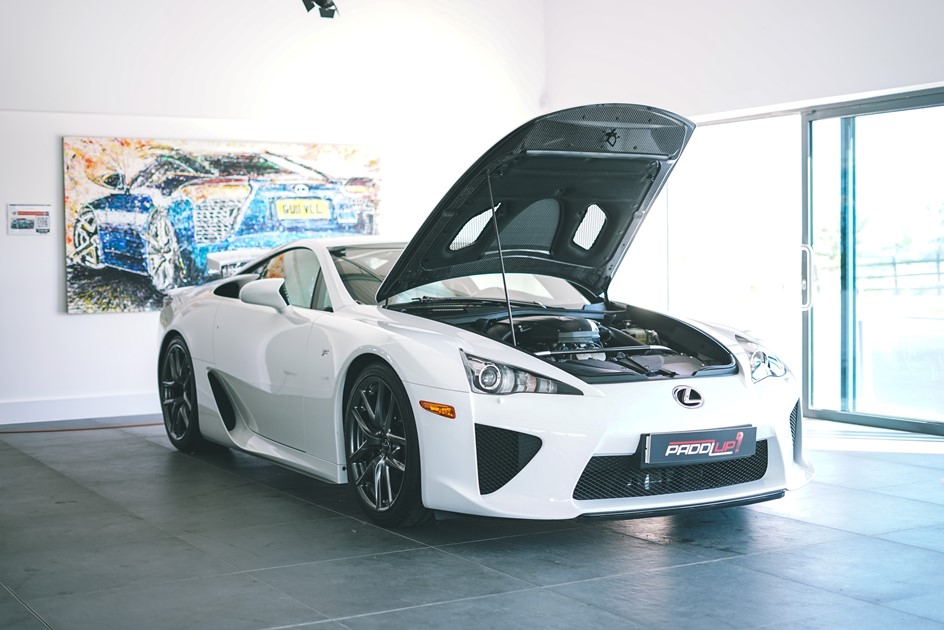
That re-reveal also set in motion the formation of Gazoo Racing. The result of a shared passion for the Nürburgring Nordschleife between Toyoda and Naruse, Lexus fielded two concept LF-As into the ring’s notorious 24-hour race in the hope of applying their learnings directly to the road car’s development.
Having dropped the hyphen, the LFA and its sticker price of £340,000 were finally revealed at the 2009 Tokyo motor show. Even with the inflated valuation, the prolonged development schedule and exotic materials meant that Toyota made a loss on each of the 500 units sold.
The astronomical build costs can be partially attributed to its engine and Yamaha’s involvement in the engine architecture. It wasn’t just the usual displacement, materials, layout etc that Yamaha contributed to either, its music division was enlisted specifically to enhance the LFA’s acoustics and it did just that, implementing a thicker surge tank and an audibly superior exhaust system, all of which combined to generate that enticing engine note that tantalises the senses.
How does all of that engineering sorcery translate into performance?
As you’d expect from two V10 supercars whose releases were separated by less than a decade, the stats are neck and neck. As we’ve already mentioned, the LFA was a bit on the chunky side weighing in at 1,614kg, by comparison, the Carrera GT’s 1,380kg puts it in another weight division. Round one to the Carrera then.
When it comes to 0-62mph times, unbelievably it is a tie. At 3.7 seconds apiece, both cars were rapid off the line. On paper, they couldn’t be separated but Hagerty did a fantastic job of putting both models through their paces. Watch the full video below.
The Lexus would go on to reach a top speed of 202mph while the Porsche managed 206mph, so pretty close in that respect, too. One area where the Carrera GT does excel by comparison is horsepower. With 604bhp to the LFA’s 552bhp, Porsche takes a convincing win in this category as well. Overall a four-one result in Porsche’s favour.
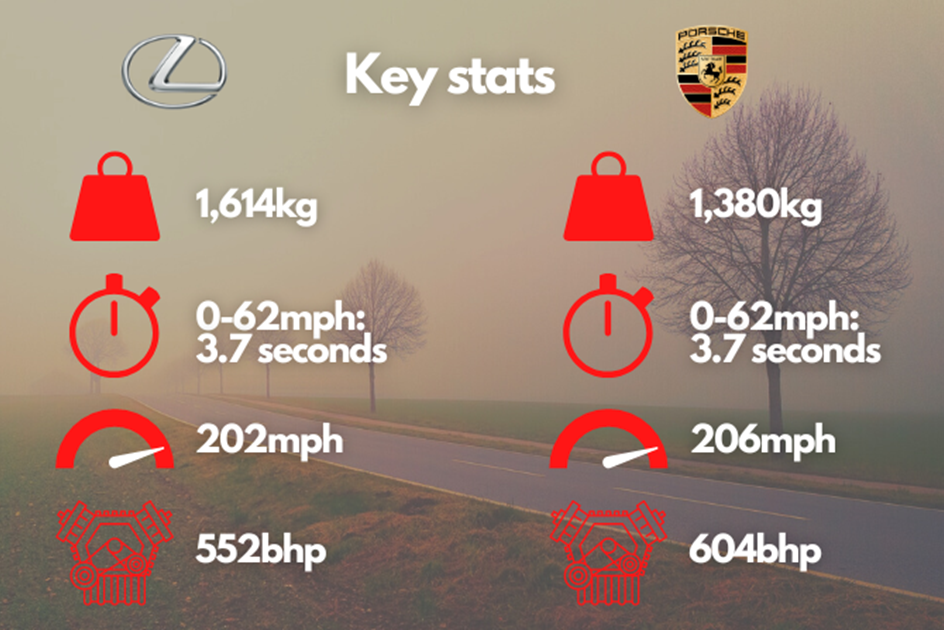
So what does all this mean for my wallet?
Off the shelf
As was the case with the speed stats, there’s nothing in it when looking at RRP for these two. Despite a significant disparity in production numbers – 500 LFAs to the Carrera GTs 1,270 – Porsche’s price tag for their revolutionary supercar was just £10,000 shy of that of the Lexus at £330,000.
How does that affect investors now?
When likened to its contemporaries, the LFA’s performance and price left a lot to be desired meaning early opinions were not unanimously positive. That being said, the LFA’s charm, build quality and raucous engine have enabled the car world to look past its shortcomings, elevating it to icon status in recent years.
This is reflected in the rising values of both the standard version and more motorsport-focused Nürburgring edition. Approximately five years ago, the standard specs hovered just under the half-a-million mark while Nürburgring examples were just above that figure. Following the Covid-19 pandemic, when car auctions got back underway in 2021 valuations fluctuated wildly with standard editions now fetching in excess of £600,000 and the Nürburgring cars pushing well past the £1 million mark.
The Porsche meanwhile, with its more plentiful production numbers, may have been considered to be less fruitful in terms of investment potential but quite the opposite was true in fact. Having garnered notoriety as an out-and-out driver's car and with the nostalgia factor having a near-10-year headstart over the LFA, values have skyrocketed in the last couple of years.
As was the case with the LFA, pre-coronavirus numbers were on the most gradual of rises (some may even say slightly stagnated) but in 2022 is when things get really interesting. Valuations more than doubled from £600,000 to almost £1.7million in around half a year making an investment in a Porsche Carrera GT, one of the most fruitful we have seen in the investment head-to-head series.
Return on investment
Both models provide some really attractive ROI (return on investment). It goes without saying that all of these figures are in an ideal hypothetical world in which you buy at the lowest point and sell at the apex of the curve.
Starting with the LFA, the standard model produced a 94.33 per cent increase from September 2017 to January 2022, translating to roughly 21 per cent per annum. The Nürburgring edition fared even better yielding a huge 145.37 per cent from April 2018 to August 2022. Over the same time period, a Nürburgring variant delivered a 33 per cent return yearly.
While financial figures for the LFA are impressive, they are somewhat eclipsed by the Carrera GT which has made headlines consistently over the last couple of years with record-breaking auctions. Buying at its lowest in January of 2017 for £514,000 and selling at its peak in March 2022 for £1,507,765 would result in an impressive 193.33 per cent ROI. Over five hypothetical years to the LFA’s four, the Carrera GT still comes out on top for annual returns with 37.17 per cent.
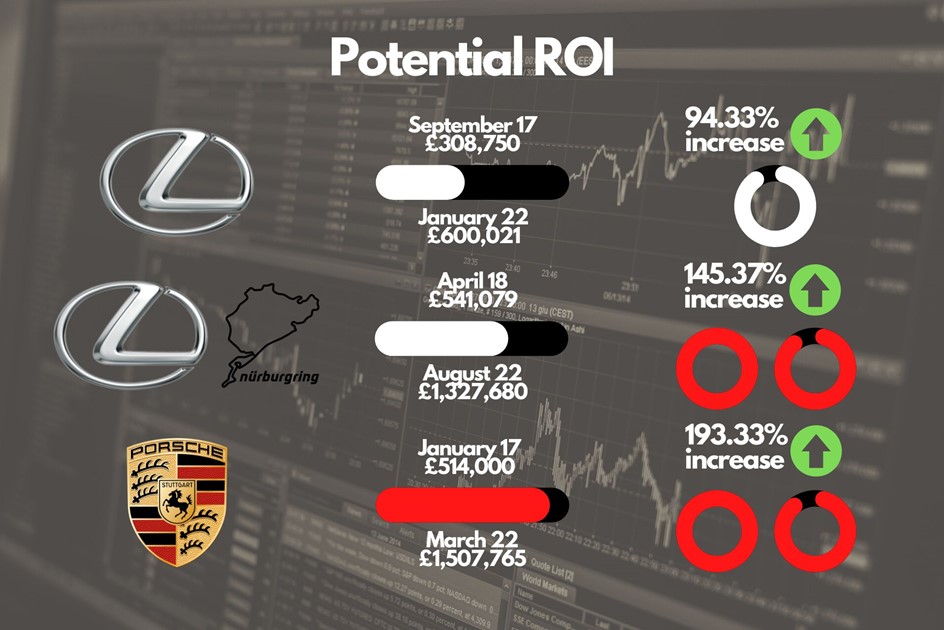
Conclusion
As always with our head-to-head investment features, everything we cover must be taken with a pinch of salt. Mileage, condition, car history and the event at which the auction is taking place all contribute to the eventual hammer price.
With that in mind, the data points towards the Carrera GT as the superior appreciating automotive asset. This comes at a price of course, with a higher point to entry than the LFA or the LFA Nürburgring, each of which is a fantastic option for supercar investment as well. The long and the short of it is that either of these iconic V10s would be a well-performing addition to your portfolio.
Data from Glenmarch and Hagerty.
Learn more about supercar investing.


